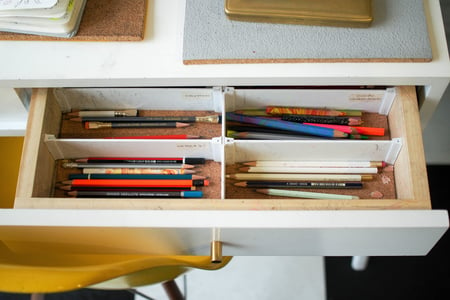
In this monthly series, CLASS trainer Carmen C. Virginia, shares her thoughts and insights as she travels around the country spreading the good news about the CLASS. This post is a bit unique because it comes from an idea she came up with at home, during a break from training.
Hey All,
I have noticed lately that many participants feel most comfortable using a “running record” approach to notetaking, rather than sorting interactions by Dimension (or even Domain for those new to the tool) while observing. Have you noticed that as well in your trainings or with your own observations? I have been struggling with how to illustrate the benefits of sorting while you observe rather than while coding for several months now. Today I had an epiphany...
This morning while working at home, I needed a set of AA batteries for my wireless mouse. I went to the kitchen and opened the drawer where I store batteries. Something near the top crunched as I pulled. When I had finally wrestled it open I stared down into a mess of items: mini light bulbs, scotch tape, staples in a box (and staples out of the box), bits of Velcro, pens, pencils, and sharpies (oh, my!), loose change, ribbons and string, an old scratched up CD (do I even own a CD player anymore?), D batteries (where are the AAs?!?), tacks, nails, wire, fishing line, scissors, appliance information, a 2-year-old receipt for heating oil ... I think you get the picture. But I couldn’t find the AAs without dumping the whole drawer out on the floor. Observing with CLASS can feel much the same as that junk drawer. There are so many different interactions happening at once and so many places to focus your attention that it can be overwhelming. This is where a solid understanding of the Domains and Dimensions can help you organize all of the various pieces of information and decrease the mental clutter.
Just like drawer organizers and partitions provide the physical structure to help us make sense of the items in our junk drawers, the Domains and Dimensions in the CLASS tool help us structure our CLASS observations and make sense of the interactions we see. While it may be much easier in the moment to mindlessly stick something in the drawer without sorting it, the end result is less effective. When you want to go back and locate a specific item (like those elusive AA batteries) it may be difficult to find, it may take more time, you may get distracted by all of the other stuff you find, or it might even be pushed so far into the drawer that you just can’t see it anymore. The same is true for our observations. If you complete your observations using a running record approach, it is like throwing items in the junk drawer without using partitions. When it is time to code you have to sift through a page or more of mixed-up interactions, trying to decide which Dimensions each interaction fits best in. I encourage you to encourage your participants to sort the interactions by Dimension (or even Domain for those just starting out with the tool) while observing. It may take more time to learn in the beginning and appear slower than using a running record approach, but it is a far more effective long-term strategy for efficiently and accurately coding interactions. After a few weeks and some practice, you may even wonder why you didn’t just do it that way in the first place!
Have CLASS will Travel!


